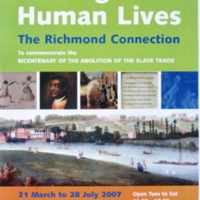
Trading in Lives: The Richmond Connection
This exhibition and education programme explored connections between transatlantic slavery and the London Borough of Richmond. This included a study of the West Indies connections in Richmond, local residents involved in abolition, and the historical presence of black people in the area. It also examined the slave forts on the coast of Ghana. 'Richmond Voices' introduced local residents who were of African or African-Caribbean descent. The accompanying booklet was written by Valerie Boyes, and produced in collaboration with the Richmond Local History Society.
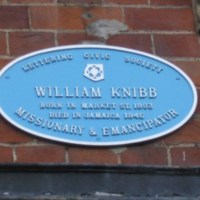
1807-2007: End of Slavery?
Manor House Museum in Kettering, in collaboration with local community groups, produced a touring exhibition which explored Kettering's involvement with the anti-slave-trade movement and issues of modern day slavery. The museum focused in particular on the life of William Knibb (1803-1845), a missionary from Kettering who taught slaves in Jamaica in the 1820s against the will of local slave owners and toured Britain speaking out against slavery. The museum produced a loans box containing material relating to Knibb and continues to have a permanent display dedicated to the missionary.
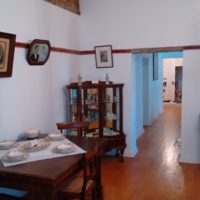
Pniel Museum
Pniel Museum is a small community-run museum which opened in 2013 in the village of Pniel, close to Stellenbosch. It has its roots in a long-running project, dating back to the unveiling of the Freedom Monument on the werf area of the former Papier Moelen manor house (which now houses the museum) in 1993. Pniel itself is a former Apostilic Union mission station which was established in 1843. Many of its early inhabitants were purportedly enslaved people looking for somewhere to settle following the ending of the five year apprenticeship period in 1839. It was designated a rural coloured group area under apartheid. A small group of locals have a clear sense of pride in their history, and embrace their connections with slavery which is taken as Pniel’s formative experience. The Freedom Monument – which celebrates emancipation – was reflective of this, and subsequent developments including two further monuments and the museum have advanced this engagement with the past. The museum itself offers a thorough overview of local history, partially laid out in the form of a historical farmhouse, and partially based on interpretive content. There is no exhibition dedicated to slavery at Pniel Museum, however the links between Pniel and slavery are evident at various points. Additionally, staff (local volunteers) are happy to talk about the links both they and Pniel hold with slavery. Perhaps the most important display in terms of slavery is a family tree of the Willemse family. At the top sits a photograph of Adriaan Willemse who is described as ‘a freed slave who settled on the Pniel mission station and became the father of almost 70% of Pniel inhabitants’. The museum functions as something of a community archive featuring donated objects ranging from cutlery to trade implements. There are, however, no objects which belonged to the village’s early and formerly enslaved inhabitants.
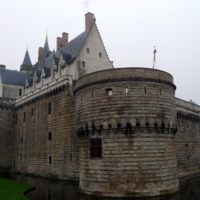
Musée d’histoire de Nantes
Musée d’histoire de Nantes (Nantes History Museum) was originally the residence of the Dukes of Brittany and the castle was restored in the 1990s. It opened to the public as a museum in February 2007. The museum is not wholly dedicated to looking at slavery, but explores the history of the castle and the city. However, it is acknowledged that the Atlantic slave trade is a key part of that history. The themes covered within the museum begin with the construction of the castle in the 13th century, and then follow the development of Nantes as part of Brittany through the ages until the 17th century. The museum also examines trade, the impact of the French Revolution, industrialisation, the two world wars and a contemporary look at Nantes as an ‘Atlantic City’. The museum added several rooms in 2016 that looked with greater detail at modern history. It has been designated a 'Monument Historique' by the French government. In addition to the historical artefacts housed in the museum, interactive and digital media is incorporated throughout as a part of the museum's aim to showcase the history of the city not only through objects and art work, but also contemporary technology.
Slavery is mainly addressed in the exhibition ‘Trade and Black Gold in the 18th Century’, where the displays address the role Nantes played as a key French port for vessels embarking on the Triangular Trade. Objects on display include maps, paintings and a collection of printed canvases produced in Nantes that would have formed a significant proportion of the cargo taken on the first leg of the trade voyage, from France to Africa. As well as examining France’s role in the logistical aspects of the trade, this exhibition also includes interpretation about Haiti. This interpretation has a dual focus, with Haiti as the destination for most of the ships originating in Nantes and the site of the most successful slave revolt in the western hemisphere.
Other exhibitions within the museum also look generally at the larger events in French history and how they changed Nantes’s relationship with slavery. Within the exhibitions on Nantes and the Revolution, the long process of abolition and then re-entrenchment of slavery under Napoleon are discussed in the interpretation. Until 1831 Nantes was still France’s largest slave trading port despite the activity being previously outlawed in 1816. Similar to the Memorial to the Abolition in Nantes, the Nantes History Museum intends to provide a reflection on local history both good and bad.
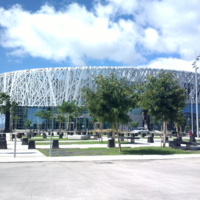
Memorial ACTe
On the former site of a sugar factory, Guadelopue's Memorial ACTe stands as a cultural institution that aims to preserve the memory of those who suffered during slavery, as well as to act as a space for discussion on the continuing repercussions. Part of UNESCO's Slave Route project, its main focus is on the challenges of bondage in the Guadeloupe islands. Memorial ACTe was opened in 2015 by then French President, Francois Hollande, and nineteen other heads of state.
The Memorial ACTe is a unique museum, both internally and externally, through its architectural design. It is also a centre for live arts and debates. It aims to provide interpretation through a variety of viewpoints and disciplines, using not only history but ethnology, social anthropology and history of art as well. The history of slavery and the slave trade are explored through a range of archival material, images and artefacts, with visual and audio installations too.
The permanent exhibition space examines the history of slavery from antiquity to the present day, using objects, reconstructions, visual and audio installations and digital interactives. The temporary exhibition space focusses on contemporary forms of artistic expression in relation to slavery around the world. In addition, there is a research centre where visitors can look into their genealogy, as well as a library and a conference hall.
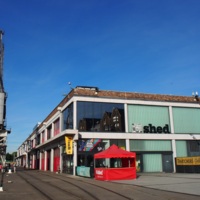
M Shed
M Shed opened in 2011 and is housed in a warehouse on Bristol’s dockside, a clear and tangible link to the history it interprets. The free-to-enter museum focuses on social history, exploring the development of Bristol as a city through people, places and daily life. It is a popular site, attaining over half a million visitors per year since 2013.
Through this local viewpoint, the museum explores Bristol’s involvement with the transatlantic slave trade and the abolition movement in its ‘Bristol People’ gallery which aims to ‘explore the activities past and present that make Bristol what it is.’ Voices from all factions of the slavery debate feature in the display, with proslavery, the enslaved, particularly those who fought for emancipation, and abolitionists all interpreted within dedicated cases. Each case contains a mix of objects, archive materials and text panels to tell the story. Quotations from key figures also bring to life the voices of those who were personally involved: for example, John Pinney, a plantation owner and sugar agent; Hannah More, a writer and Abolition campaigner; John Kimber, a slave ship captain accused (and acquitted) of murder; Silas Told, an ordinary sailor on slaving voyages. These Bristolian voices give different perspectives on how those involved in the trade saw it at the time. Quotations printed around the gallery also provide the views of today’s visitors to the trade. The exhibition also has sections about the legacies of the slave trade within Bristol, particularly in relation to the representation of African or Afro-Caribbean communities in popular culture, the presence of racism in the city, and the legacies of prominent slave owners in some of Bristol's public institutions.
The theme of antislavery also features as the starting point for a display on public protest movements. One case focusses on Thomas Clarkson’s visit to Bristol to collect information against the trade, another on the campaign to abstain from slave-produced sugar in the 18th century and the Bristol bus boycott against racist employment practices in the 20th century. This display then goes on to look at other popular campaigns and protest movements including women’s suffrage, riots, strikes and the Occupy movement. This perspective, situating the abolition campaign as the beginning of a British tradition of society campaigning, is a unique one across UK museums.
In the Bristol Life gallery, the stories of two Black Bristolians look at the new life for the runaway enslaved man, Henry Parker, and the Windrush generation Princess Campbell.
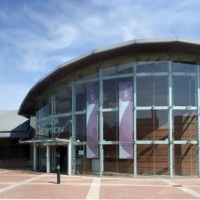
Wedgwood Museum
The Wedgwood company's founder, Josiah Wedgwood I, had the initial idea for preserving and curating a historical collection in 1774. A public museum dedicated to this purpose first opened in 1906, and moved to its present site in 2008. In 2009 the museum won the Art Fund Prize for Museums and Galleries. It underwent further redevelopment in 2015/16. The museum's rich collection of ceramics and archive material tell the story of Josiah Wedgwood, his family, and the business he founded over two centuries ago.
The collections at the museum make up one of the most significant single factory accumulations in the world. They contain a range of things from ceramics, archive material and factory equipment, to social history items that help interpret life in Georgian Britain. Key themes explored throughout the galleries include Wedgwood's links to royalty, the influence of nature on his work and his position as a successful entrepreneur.
On display in the museum also are a small collection of objects which relate to Wedgwood's prominent role in the campaign to abolish the British Slave Trade. Here, the display focusses on the production of the well-known antislavery medallion, which bears the 'Am I Not a Man and a Brother?' image. It also highlights Wedgwood's connection to Olaudah Equiano and the influence of proslavery factions in British society during the eighteenth and nineteenth century.
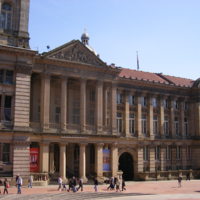
Birmingham Museum and Art Gallery
Birmingham Museum and Art Gallery has over forty display galleries that explore the development of Birmingham as a city, through its diverse communities. Since opening in 1885, the museum has built a vast collection of social history, art, archaeology and ethnographic items. It is one of nine sites managed by Birmingham Museums, the largest museums trust in the UK, whose vision for their service is, ‘to reflect Birmingham to the world, and the world to Birmingham.’ Housed within Birmingham's council buildings in the city's Chamberlain Square, the site welcomes around one million visitors a year.
Slavery and abolition feature as themed displays within the ‘Birmingham: Its People and Its History’ gallery, which dominates the third floor of the Victorian museum. Initially developed as part of the 2007 bicentennial commemoration activities, the displays highlight the contradictory nature of Birmingham’s relationship with the slave trade. Visitors are informed, through both interpretive text panels and collections artifacts on display, about the goods manufactured in Birmingham that were taken to Africa to trade in exchange for human beings. Simultaneously, the presence of antislavery activists in the city is explained, with digital interactives, portraits and abolitionist material culture all illustrating the role of Quakers and other prominent abolitionist figures, including Joseph Sturge and Olaudah Equiano.
The displays also alert visitors as to the existence of modern slavery by a panel headed with the words, ‘Around the world, people are still enslaved today.’ The visitors are then invited to leave their own comments as to how society can help to stop it in their community and around the world.
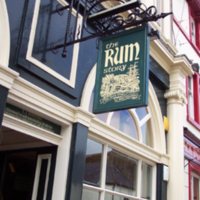
The Rum Story: The Dark Spirit of Whitehaven
‘Rum Story: The Dark Spirit of Whitehaven’ is a museum housed inside the former warehouse, office and shop of the Jefferson’s Rum Company in Cumbria. During the eighteenth and early nineteenth century Jefferson's would have been in receipt of slave-grown produce from the Caribbean, which would have been stored and processed in the museum's building.The museum opened in 2000 as part of the town’s regeneration project and aims ‘to bring history to life.’
On entering the museum, visitors walk through a series of room settings, from the African jungle at the beginning of enslavement, to a reconstruction of a slave ship hold complete with mannequins, and finally plantation offices . These room settings offer a very immersive experience, complete with opportunities for total sensory engagement; scent boxes, samples for tasting on exit and soundtracks all the way through.
The collections consist mainly of archival material which illustrates the company's connection to the Transatlantic Slave Trade, and how that made Whitehaven a prosperous port town. Interpretive panels explain the room settings, and diorama scenes with mannequins illustrate to visitors the way things were during the period, for both the enslaved and the workers in Jefferson's factory. The greatest asset that the museum has is the building itself, which provides a true, tangible link to the trade and its legacy on the local community.
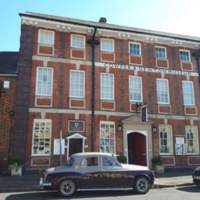
Cowper & Newton Museum
The Cowper & Newton Museum is a very small, local museum managed by a charitable trust and staffed predominantly by volunteers. The museum is situated in Orchard House, the home of poet and author William Cowper between 1768 to 1786. Since it opened in 1900, the museum has focussed on telling the story of Cowper’s life in the thriving Georgian market town of Olney, Buckinghamshire. The museum also examines Cowper's relationship with his friend and neighbour, slave-trader turned ordained priest and abolitionist, Reverend John Newton.
The museum’s mission is for visitors to ‘relive Georgian life in Olney.’ Using items of personal collections relating to both of the museum’s namesakes, the displays bring the house to life in the form of period room settings combined with display cases and interpretive panels. Both Cowper and Newton published writings against the slave trade and corresponded with other abolitionists, including William Wilberforce. The displays provide some context on the slave trade before outlining Cowper and Newton’s involvement in abolition. This is represented through a range of objects including archive material, portraits and furniture both from the museum’s collection, and loaned pieces from Wilberforce House Museum, Hull.
As well as being a theme which runs throughout the whole museum, with Cowper’s ‘The Negro’s Complaint’ on display in the Georgian History Room for instance, there is one particular room on the first floor of the house which focuses predominantly on the slave trade and abolition. Like most of the museums analysed here, the interpretive panels in this display were created using funds made available for the bicentenary in 2007.
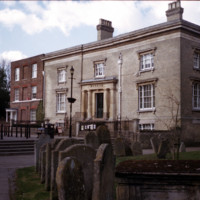
Wisbech and Fenland Museum
The Wisbech and Fenland Museum is one of the oldest, purpose-built museums in Britain. With its origins dating back to 1835, visitors are welcomed into a real ‘treasure house,' with collections housed in original nineteenth century cases. The museum is free to enter and focusses on local history, housing the vast and varied collection of the town’s literary and museum societies. Using these, the museum presents displays on a range of themes relating to key local industries, wildlife, archaeological finds and important people from the area.
One of these important people is Wisbech-born Thomas Clarkson, and it is through him that the theme of antislavery fills several of the largest cases in the main gallery. Using a combination of personal collections, archive material and objects linked to the wider slave trade (notably whips and a manacle), the museum follows Thomas Clarkson’s contribution to the abolition campaign, both in Britain and abroad. The museum also exhibits the narrative of Thomas’ brother John Clarkson who was instrumental in facilitating the movement of freed-slaves from Nova Scotia, Canada, to Sierra Leone.
This display was developed as a larger, standalone exhibition for the 2007 bicentenary entitled ‘A Giant with One Idea,’ but this was reduced following the end of the commemorations as funding was withdrawn.
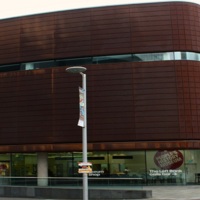
People's History Museum
The People's History Museum (PHM) is Britain’s national museum of democracy, telling the story of its development in Britain; past, present and future. It is located in Manchester, the world's first industrialised city and aims to ‘engage, inspire and inform diverse audiences by showing there have always been ideas worth fighting for’. Attracting over 100,000 visitors a year, with free entry, the museum outlines the political consciousness of the British population beginning with the Peterloo Massacre in 1819. The British transatlantic slave trade and the abolition movement feature in this discussion early on in Main Gallery One. In a small display, the interpretation discusses the role of slave-produced cotton in the rise of Manchester as an industrial powerhouse. It goes on to describe the important role that the people of Manchester had in supporting the abolition campaign. The focus is on the local experience. This is also illustrated with one of the exhibition’s key interpretive characters, William Cuffay, a mixed-race Chartist leader whose father was a former slave. In Main Gallery Two, the displays are brought closer to the present day, other issues explored include anti-racism and attitudes towards migration and multiculturalism. There is a clear link, although not explicitly expressed, in the interpretive text between these ideas and the lasting legacies of Britain's involvement in the slave trade.
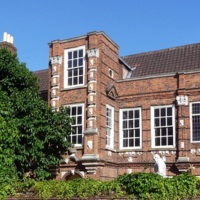
Wilberforce House Museum
Wilberforce House Museum is one of the world's oldest slavery museums. It opened in 1906 after the building, the house where leading abolitionist William Wilberforce was born, was bought by the Hull Corporation to preserve it for reasons of learning and of civic pride. Initially a local history museum, at the centre of Hull's historic High Street, the collections soon expanded through public donations and, unsurprisingly, these donations focussed heavily on items relating to Wilberforce. Today the museum and its collections are owned by Hull City Council and managed by Hull Culture and Leisure Limited. It forms part of Hull's 'Museums Quarter' alongside museums on transport, local social history and archaeology. In addition to the Wilberforce displays, the museum also features period room settings, silver, furniture and clocks, as well as a gallery exploring the history of the East Yorkshire Regiment.
The galleries at Wilberforce House Museum tell many different stories. An exploration of the history of the house welcomes visitors into the museum, followed by displays about William Wilberforce from his childhood, to his work and his family life. These galleries have examples of costume, books, domestic items and even the 1933 Madame Tussauds wax model of Wilberforce himself. Up the grand cantilever staircase, installed by the Wilberforce family in the 1760s, the displays continue. Here they look at the history of slavery and the origins of the British transatlantic slave trade. One gallery contains items that illustrate the richness of African culture prior to European involvement, dispelling the traditional myth that Africa was empty and uncivilised before the intervention of the Western world. Following that, the exhibition narrative goes on to look at the process of enslavement, the logistics of the trading system, the Middle Passage and slave auctions. Again, a wide range of collections are used to illustrate the informative panels. This is repeated in the displays about plantation life and resistance.
Of course no museum about William Wilberforce would be complete without an exhibition on antislavery and the abolition movement. This is extended with two galleries which look at the legacies of such a campaign in terms of modern slavery and human rights today. There are opportunities in these galleries for visitors to provide their comments and opinions, through several interactives, as well as engage with ideas as to how they can actively participate in today's campaign to end modern slavery.
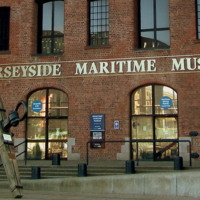
International Slavery Museum
The International Slavery Museum (ISM) is the first museum in the world to focus specifically on slavery, both historical and modern. Managed by National Musuems Liverpool, it opened to great acclaim in 2007 and has since welcomed over 3.5million visitors. Through its displays and wide-ranging events programme, the ISM aims to tackle ignorance and misunderstanding in today’s society by exploring the lasting impact of the transatlantic slave trade around the world. On entering the ISM, visitors immediately arrive in a space designed to provoke thoughts and discussion- the walls are etched with powerful quotations from historical figures and contemporary activists, many from the African diaspora. There is a display of West African culture, designed to showcase the breadth and depth of African civilisation before the devastation caused by the transatlantic slave trade, which includes examples of textiles, musical instruments and other ethnographic material. The display then goes on to look at the trade itself; the logistics, the processes and who benefitted on one hand, whilst also exploring the experience of the enslaved through multisensory interpretive techniques, including an emotive film of what the Middle Passage may have been like. All of these displays are supported by the rich, local archival collections, drawing on Liverpool’s own history as a prosperous, slave-trading port. Moving forward along a chronological timeline, the exhibition then covers abolition, significantly beginning with the acts of resistance from the enslaved themselves, through to organised abolition movements and then discussing the continued fight for freedom through the post-emancipation then civil rights era, right into the twenty-first century. The lasting legacies of the trade are thoroughly examined, from racism and the under-development of African countries, to the spread of African culture and diverse nature of Liverpool’s communities. A unique feature of the ISM is its ‘Campaign Zone’, opened in 2010, which houses temporary exhibitions just off the main gallery space. These are frequently run in conjunction with campaign organisations and usually focus on aspects of modern slavery, highlighting to visitors that it is very much still a live issue and not one that has been relegated to history. Recent exhibitions in this space have included 'Broken Lives' organised with the Daalit Freedom Network and 'Afro Supa Hero' with artist Jon Daniels.
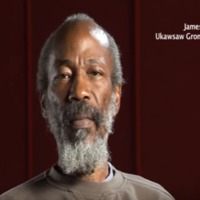
The Longest Journey: from Slavery to Abolition
The Longest Journey: From Slavery to Abolition was held at Epping Forest District Museum in October 2007. The exhibition also toured venues in the region, including the Cambridge and County Folk Museum. The exhibition examined clues in the collections of Essex museums and the Essex Record Office exploring the history of the slave trade and the abolition movement in Essex. A set of ‘Essex Links' panels revealed the Essex people and places involved, including the story of Anne Knight, Chelmsford resident and abolitionist. As part of the project, a film was commissioned for Black History Month 2007: ‘The Story of James Albert Ukawsaw Gronniosaw, an African Prince' is based on the autobiography published in 1774 by James Albert, a freed slave. Captured into slavery as a child in present-day Nigeria, once freed he travelled to England where he lived and worked in Colchester. The film features actor Shango Baku and was produced by Harvest Films and commissioned by Epping Forest District Museum, Museums in Essex Committee and Renaissance in the Regions.
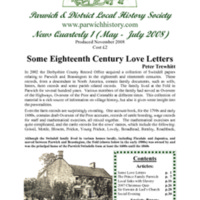
Parwich 2007 Slavery Season
To commemorate the bicentenary of the Abolition Act, Parwich Church and the Local History Society organised a short series of events. A talk by Alasdair Duncan, 'Operation Reflex', looked at how small rural communities can help combat modern slavery. A talk by Peter Trewhitt explored local involvement links to slavery from pre-historic times through the high reliance on slave work forces in Roman and Saxon times to the influx of wealth from the exploitation of African slaves on Caribbean plantations.
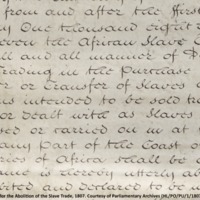
Hidden Histories: Stockport and the Slave Trade
An exhibition at Stockport Story Museum exploring the connections between the transatlantic slave trade and the town.
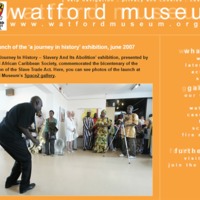
A Journey in History: Slavery and Its Abolition
A Journey In History: Slavery And Its Abolition was an exhibition presented by Watford African Caribbean Society to mark the bicentenary of the Abolition Act. The exhibition was launched at Watford Museum's Space2 gallery in 2007. Photographs of the launch are available on Watford Museum's website.
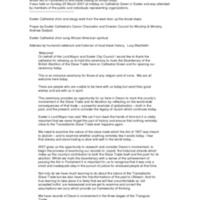
Events to mark the bicentenary in Exeter
On Sunday 25 March 2007, a ceremony was held on Cathedral Green in Exeter to mark the bicentenary. Organised by Exeter City Council, the ceremony was attended by members of the public and individuals representing local organisations. Historian Lucy MacKeith examined the links between Devon, the transatlantic slave trade and its abolition. Extracts were read from the Narrative of Olaudah Equiano, and names read aloud of some of the Africans who came to Devon because of the county's connection to the slave trade.
The play 'Albert and the Story of Equiano' was performed at the Royal Albert Memorial Museum in October 2007. It told the story of Olaudah Equiano, a leading African figure in the British abolition movement in the 18th century.
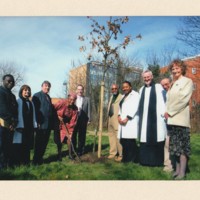
Events led by Leyton and Leytonstone Historical Society
The Leyton and Leytonstone Historical Society led a number of commemorative events to mark the bicentenary. In March 2007 an oak tree was planted in the churchyard of St John’s Church Leytonstone. At the ceremony there were a number of speeches, after which community nurse and local campaigner Mrs Zena Edmund-Charles was invited to plant the commemorative tree. There was also an art exhibition at St John's featuring artefacts and mementos of the period. A commemorative ‘Freedom Walk’ was led by local historian Peter Ashan, following a route around Leyton, Leytonstone and Walthamstow. The exhibition was shown again during Black History Month, alongside a video story of Olaudah Equiano.